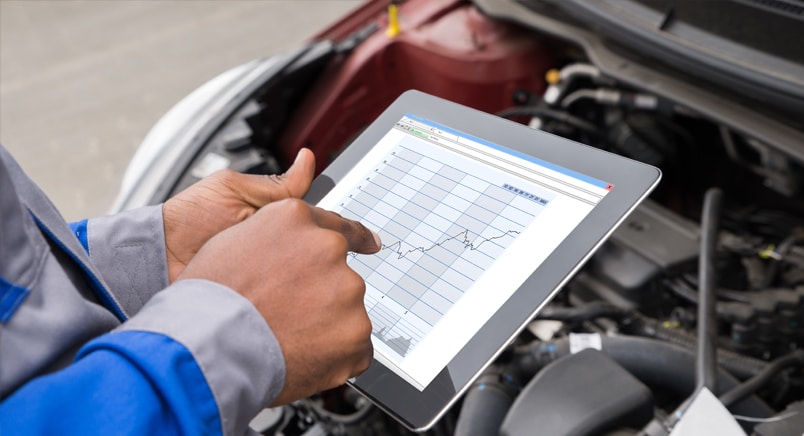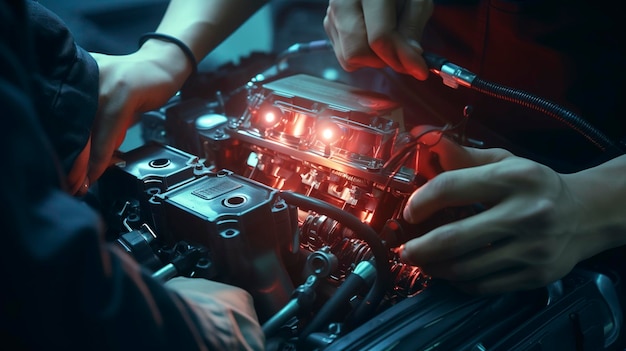In today’s world, keeping your vehicle in optimal condition goes beyond regular oil changes and tire rotations. One of the key methods to ensure your vehicle’s health is to use an engine diagnostic tool. These remarkable devices offer a deep dive into your car’s systems, allowing you to identify issues before they become major problems. If you’re wondering how to use engine diagnostic tool, you’ve come to the right place. Dive into this comprehensive guide and you’ll soon be able to use these tools like a professional.

What is an Engine Diagnostic Tool?
An engine diagnostic tool, also known as an OBD (On-Board Diagnostics) scanner, is a device that connects to your car’s computer system. It retrieves useful information about the vehicle’s health, emissions, and performance. The main purpose of an engine diagnostic tool is to provide real-time data and error codes, which help you understand what’s going on under the hood. Using these insights can help you make informed decisions about maintenance and repairs.
Why Do You Need an Engine Diagnostic Tool?
With advancements in automotive technology, cars have become complex machines with numerous intricate systems. An engine diagnostic tool provides several advantages:
- Early Detection: Quickly identify minor issues before they escalate into costly repairs.
- Cost Savings: Avoid unnecessary mechanic fees by diagnosing simple problems yourself.
- Convenience: Conduct quick checks without having to visit a repair shop.
- Peace of Mind: Knowing your car is in good condition can provide great reassurance.
Different Types of Engine Diagnostic Tools
Before we get into how to use an engine diagnostic tool, let’s look at the types available:
- Basic Code Readers: These usually display error codes and a brief description.
- Professional Scan Tools: Offer detailed diagnostics and feature-rich interfaces.
- Bluetooth/Wi-Fi Scanners: Connect to your smartphone for real-time updates and data analytics.
Choosing the Right Diagnostic Tool
Selecting the right engine diagnostic tool depends on your needs and expertise level. For simple checks, a basic code reader may suffice. However, for in-depth diagnostics, professional tools or Bluetooth scanners are recommended. Make sure the tool is compatible with your vehicle model and supports the features you need.
Understanding OBD-II Codes
Let’s now delve into what you are likely to see when you plug in your diagnostic tool.
Types of OBD-II Codes
- P-Codes (Powertrain): Includes engine, transmission, and emissions-related codes.
- B-Codes (Body): Focuses on comfort, convenience, and safety systems.
- C-Codes (Chassis): Concerned with mechanical systems such as brakes and suspension.
- U-Codes (Network): Related to network and vehicle integration communications.
How to Use an Engine Diagnostic Tool?
This section breaks down the step-by-step process for using an engine diagnostic tool:
Step 1: Locate the OBD-II Port
The OBD-II port is generally located under the dashboard, close to the steering column. It’s a 16-pin port that looks somewhat like a computer’s peripheral connector.
Step 2: Connect the Diagnostic Tool
Once you’ve located the OBD-II port, plug in your diagnostic tool. Ensure a secure connection to begin the reading process. Your car’s ignition should be turned to the ‘on’ position, but the engine doesn’t necessarily need to be running.
Step 3: Read the Codes
After the tool is connected, it will start the diagnostic process. Depending on the tool, you may need to navigate some menus. The device will read and display the Diagnostic Trouble Codes (DTCs). These codes will help you pinpoint what’s wrong with your vehicle.
Step 4: Interpret the Results
Look up the displayed codes in the tool’s manual or an online database. This will help you understand the issues your car is facing. The most common codes for the check engine light can be found [here](https://www.dubizzle.com/blog/cars/car-diagnostic-test/)
Step 5: Plan Your Next Steps
Based on the codes, decide whether you can address the issue yourself or if you need professional help. Sometimes, it’s something as simple as a loose gas cap, while other times, it could be more severe.
Advanced Diagnostics and Features
Most advanced diagnostic tools offer a range of features beyond basic code reading. These include:
- Live Data Streaming: Get real-time information on various sensors and systems.
- Graphing: Visualize performance metrics over time.
- Freeze Frame Data: Snapshot of the engine condition at the time a fault occurs.
- Emission Testing: Ensure your vehicle meets regulatory standards.
- Multi-System Scanning: Diagnose everything from the braking system to air conditioning.
Frequently Asked Questions
FAQ 1: What Are Some Common OBD-II Codes?
Some common OBD-II codes include:
- P0171: System Too Lean (Bank 1)
- P0300: Random/Multiple Cylinder Misfire Detected
- P0420: Catalyst System Efficiency Below Threshold (Bank 1)
FAQ 2: Can I Use an Engine Diagnostic Tool on Any Vehicle?
Most modern vehicles manufactured after 1996 are OBD-II compliant. Always check your vehicle’s manual or consult the manufacturer to ensure compatibility.
FAQ 3: How Often Should I Use an Engine Diagnostic Tool?
It’s a good practice to use an engine diagnostic tool every few months or whenever your car shows warning lights. Regular checks can help you stay ahead of potential issues.
Maintaining Your Engine Diagnostic Tool
An engine diagnostic tool is an investment. Proper maintenance ensures it functions well for years:
- Storage: Keep it in a safe, dry place when not in use.
- Updates: Regularly update the software to include the latest error codes and functionalities.
- Handling: Avoid physical damage and handle the tool with care.

Conclusion
Using an engine diagnostic tool is an effective way to keep your vehicle in top shape. With the right tool and some basic knowledge, you can diagnose and solve many issues yourself. This not only saves money but also gives you a deeper understanding of your vehicle’s health. Don’t wait for a problem to escalate; invest in a good diagnostic tool today and enjoy the peace of mind that comes with knowing your car is running smoothly.
For more detailed, industry-specific insights on diagnostics and maintenance, you might consider reading [Three Benefits of Getting an Engine Diagnostic](https://www.fischerhonda.com/blogs/4408/three-benefits-of-getting-an-engine-diagnostic-for-your-honda/)